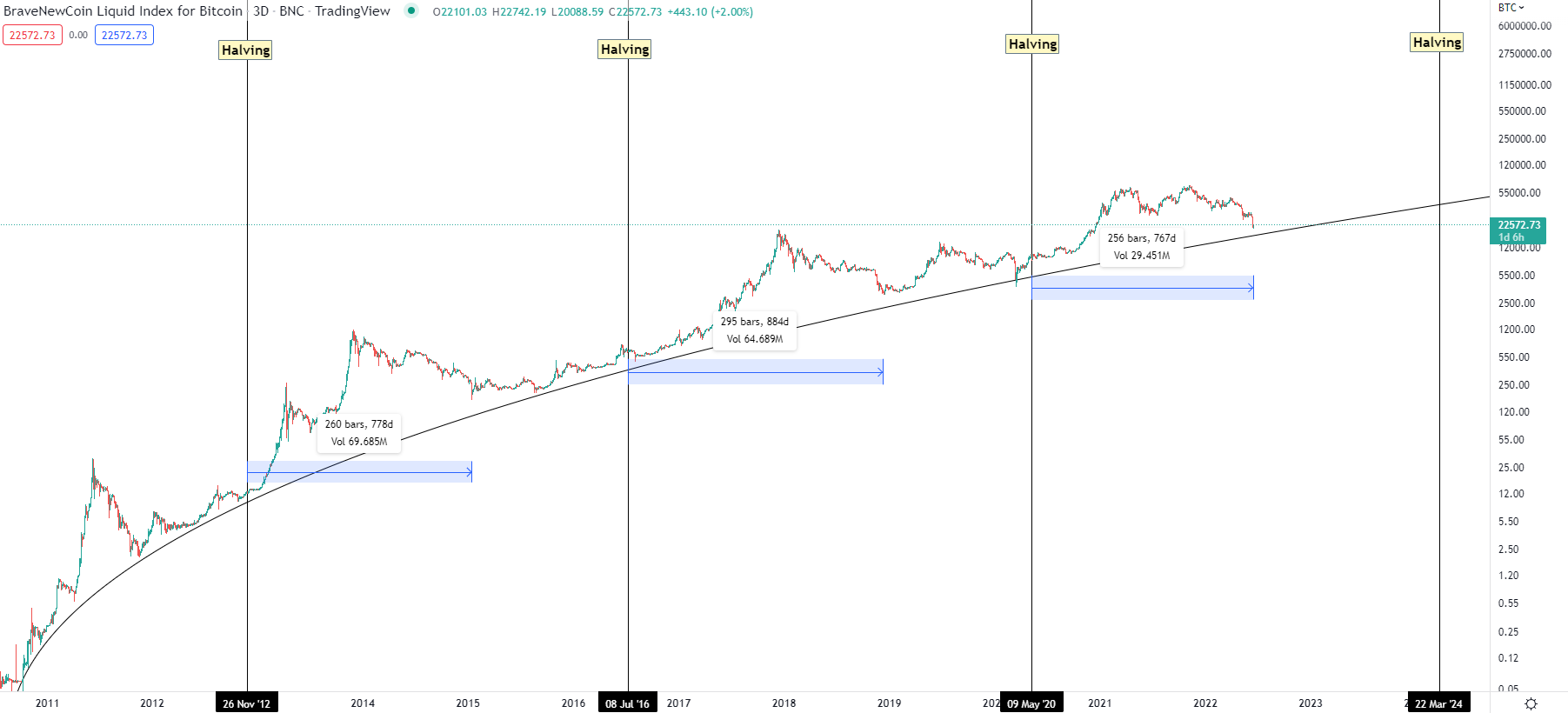
Disclaimer: The opinions expressed by our writers are their own and do not represent the views of U.Today. The financial and market information provided on U.Today is intended for informational purposes only. U.Today is not liable for any financial losses incurred while trading cryptocurrencies. Conduct your own research by contacting financial experts before making any investment decisions. We believe that all content is accurate as of the date of publication, but certain offers mentioned may no longer be available.
With the massive correction on the crypto market, more traders and investors are switching from making short and mid-term predictions and are looking at macro data like Bitcoin halving cycles and the effect they have on the crypto market.
Investors who use BTC halving as a market indicator often rely on the mid-halving, which sometimes becomes a bottom for the price of the digital gold. In the previous cycle, we saw a mid-term bounce off of the logarithmic support curve, which supposedly correlates with the 780th-880th day of the halving cycle.

The analysis based on Bitcoin's halving model has its roots in the simple law of supply and demand. The size of the block reward is a tool that can affect Bitcoin's total supply inflation directly as miners provide constant pressure on the market.
In two previous halving cycles, Bitcoin successfully bottomed out around the aforementioned day range, which is even more notable on the logarithmic chart.
Halving continues to affect market
During the bullrun of 2021, many analysts, including Willy Woo, believed that halving would no longer have such an impressive effect on the market as we saw before. His main reasoning was institutional exposure on the cryptocurrency market, which is going to tie it more to stocks and make it less independent.
We are yet to see the actual source of the pressure on the cryptocurrency market since Bitcoin is currently moving in correlation with the stock market, which had been plunging after unexpected inflation data and the Fed's hawkishness.
In addition to macroeconomic pressure on the market, problems with Ethereum-based DeFi services and platforms are causing additional panic on the market.

 Dan Burgin
Dan Burgin Vladislav Sopov
Vladislav Sopov U.Today Editorial Team
U.Today Editorial Team